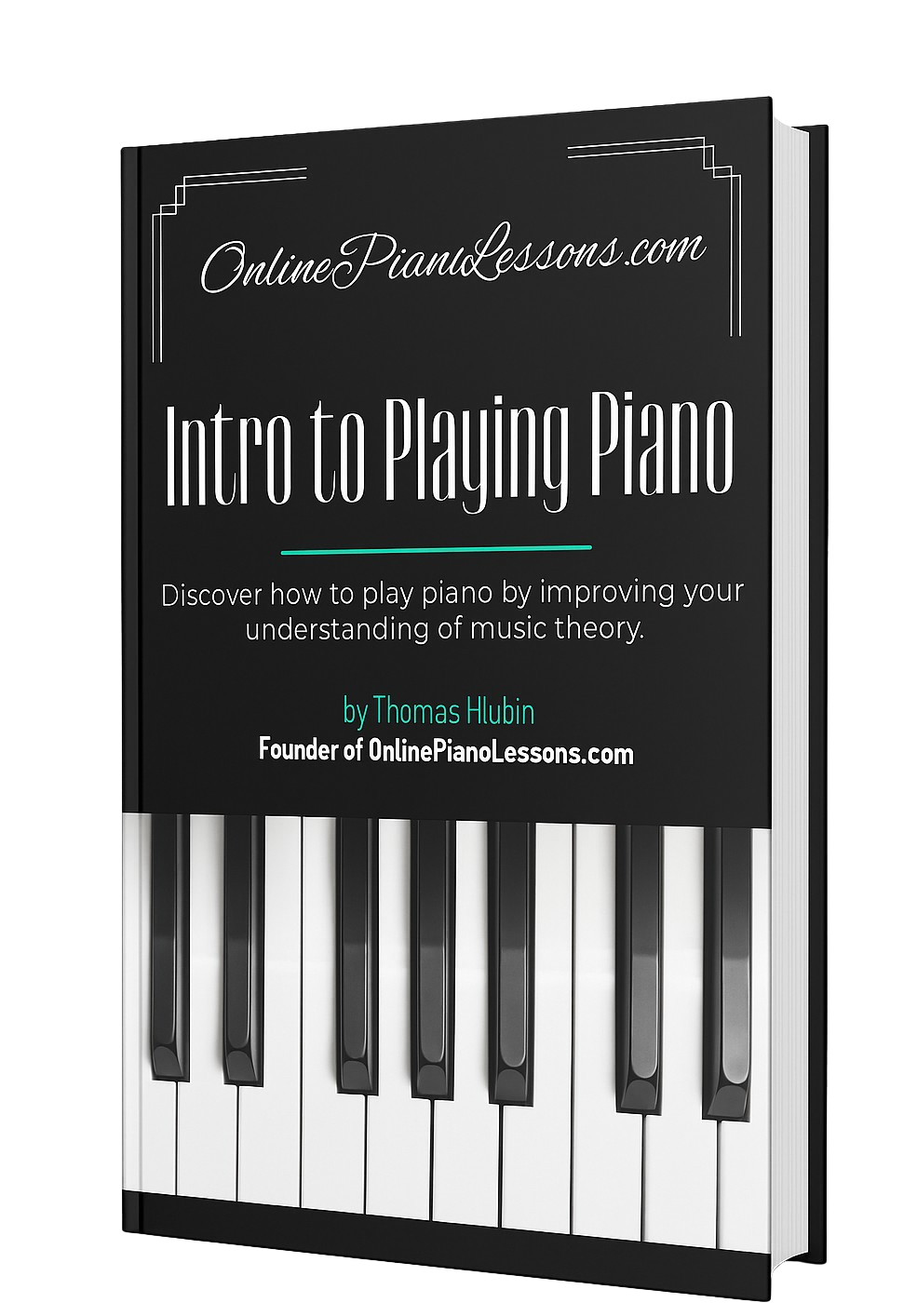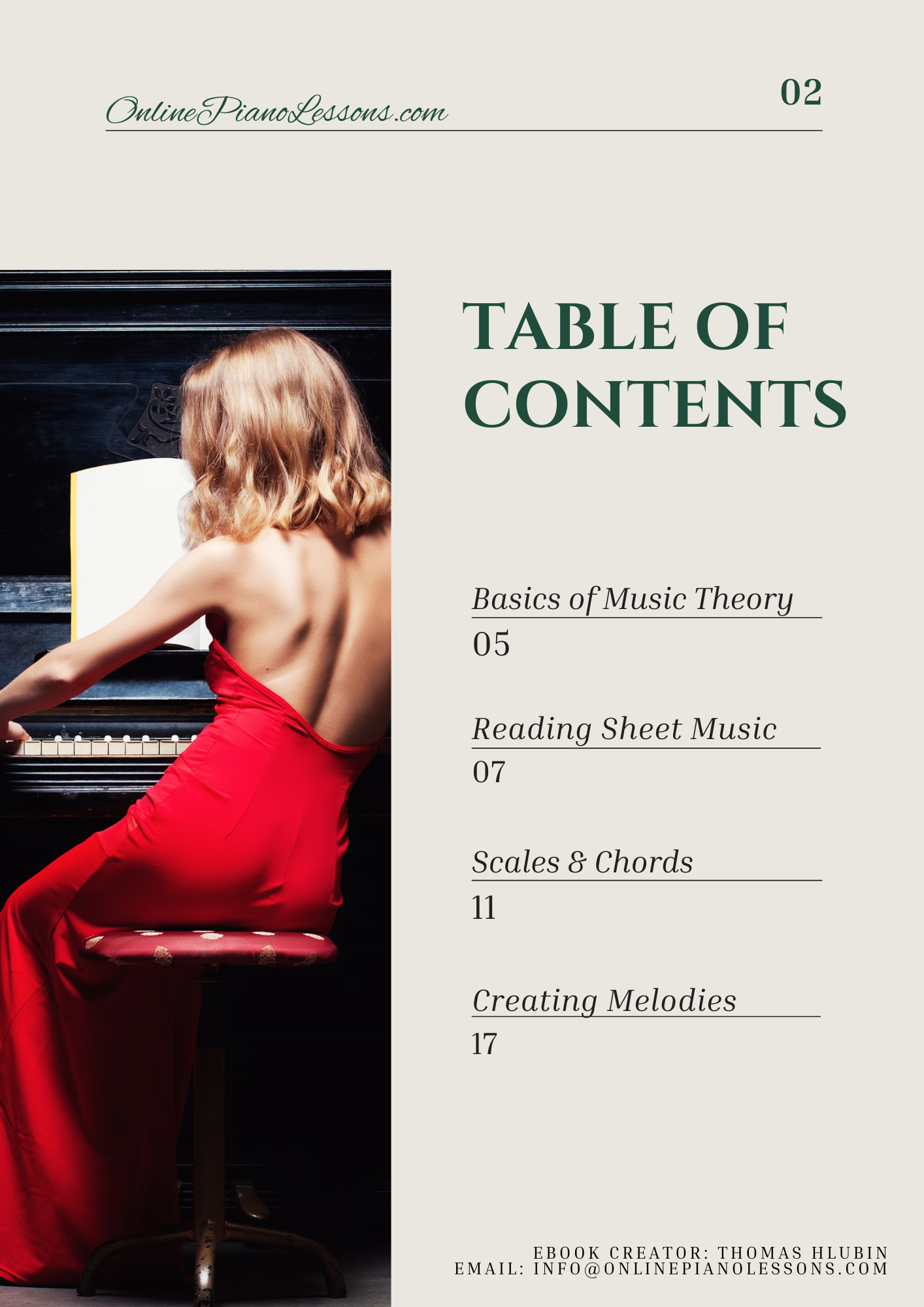Accidentals can be confusing when you first start learning piano, but they are one of the most important parts of reading sheet music and understanding music theory. In this guide, we’ll break down exactly what accidentals are, how they work, and how you can use them to make your playing more expressive and accurate.
Quick Preview: This definitive guide to accidentals explains what they are, how they appear in sheet music, and how they affect piano notes. You’ll learn about sharps, flats, and naturals, how they function in music theory, and practical tips for applying accidentals while playing piano.
Accidentals Chart (Quick Reference)
| Accidental | Symbol | Effect on Note | Piano Example |
|---|---|---|---|
| Sharp | ♯ | Raises note by one semitone | F → F♯ (white key to black key on the right) |
| Flat | ♭ | Lowers note by one semitone | B → B♭ (white key to black key on the left) |
| Natural | ♮ | Cancels a sharp or flat, returns note to original pitch | F♯ → F (back to white key) |
| Double Sharp | 𝄪 | Raises note by two semitones | F → F𝄪 (same as G) |
| Double Flat | 𝄫 | Lowers note by two semitones | E → E𝄫 (same as D) |
What Are Accidentals?
In music theory, accidentals are symbols in sheet music that change the pitch of a note. When you’re playing piano, accidentals tell you to play a note higher, lower, or return it to its natural state. The three most common accidentals are:
- Sharp (♯): Raises a note by one semitone (one half step on the piano).
- Flat (♭): Lowers a note by one semitone.
- Natural (♮): Cancels a sharp or flat and returns the note to its original pitch.
For example, if you see an F♯ in your sheet music, instead of playing the white key F, you’ll play the black key immediately to the right of F.
How Accidentals Work in Sheet Music
Accidentals apply only to the measure where they appear unless canceled by another accidental or a bar line. Once you move into the next measure, the note reverts back to its original form unless another accidental is written.
For instance, if you see a C♯ at the beginning of a measure, every C in that measure will be sharp until the measure ends. When you start the next measure, the C goes back to natural unless marked again.
The Role of Accidentals in Music Theory
Accidentals expand the musical possibilities of the piano far beyond the basic seven natural notes (A, B, C, D, E, F, G). In music theory, they allow you to explore chromaticism, create tension, and resolve into more stable notes.
For example, jazz, blues, and classical music all rely heavily on accidentals to create emotional depth. Without them, music would feel limited and repetitive.
Types of Accidentals Beyond Sharps and Flats
While sharps, flats, and naturals are the most common, there are also other accidentals in advanced sheet music and music theory:
- Double Sharp (𝄪): Raises a note by two semitones.
- Double Flat (𝄫): Lowers a note by two semitones.
Though less common in beginner sheet music, these accidentals are often seen in more advanced piano compositions.
Accidentals on the Piano Keyboard
The piano keyboard is the perfect visual tool for understanding accidentals. The black keys are most commonly associated with sharps and flats, but accidentals are not restricted to black keys. For example:
- F♯ is the black key to the right of F.
- G♭ is the same black key but thought of as one step down from G.
- E♯ is actually the white key F, because it is one step higher than E.
- C♭ is actually the white key B, because it is one step lower than C.
This shows how accidentals in sheet music don’t just mean “black keys”—they shift any note up or down.
Why Accidentals Matter When Playing Piano
Accidentals give piano music color, tension, and variety. Without them, you would only be able to play in the “white key” scale, which would limit expression and creativity. Accidentals let composers and pianists explore more complex keys, harmonies, and melodies.
For pianists, mastering accidentals means being able to smoothly adjust fingerings, anticipate black and white key combinations, and bring more accuracy and expression to your playing.
Tips for Reading and Playing Accidentals
- Look ahead in the measure: If you see an accidental, remember it applies throughout the measure.
- Practice scales with sharps and flats: This helps you get comfortable with accidentals under your fingers.
- Slow down when learning new music: Accidentals can easily be missed if you rush.
- Visualize the keyboard: Think in terms of steps (half steps up or down) rather than just black or white keys.
- Work with a metronome: Practicing accidentals slowly with steady timing improves accuracy and confidence.
Accidentals in Different Musical Styles
- Classical music: Frequently uses accidentals to modulate between keys and add harmonic richness.
- Jazz: Accidentals are central to creating blue notes, extended chords, and improvisation.
- Pop and rock: Accidentals often appear in modulations or to give melodies a unique twist.
No matter the genre, accidentals are a fundamental part of music theory and playing piano.
Frequently Asked Questions
What do accidentals do in music?
Accidentals change the pitch of a note by raising it, lowering it, or returning it to its natural state.
Do accidentals only apply to black keys on the piano?
No. Accidentals can apply to both black and white keys. For example, E♯ is the same as F, and C♭ is the same as B.
Do accidentals last for the whole piece?
No. Accidentals last only within the measure where they appear, unless the composer writes them again in the next measure.
Why are accidentals important in sheet music?
They expand the range of notes available, allowing for richer harmonies, modulations, and expressive melodies.
Are double sharps and double flats common?
They are less common but do appear in advanced piano pieces, particularly in complex keys.




 Hi, I'm Thomas, Pianist Composer,
Hi, I'm Thomas, Pianist Composer,  I love playing piano, creating new melodies and songs, and further developing my online piano course and making updates/additions to my site OnlinePianoLessons.com!
I love playing piano, creating new melodies and songs, and further developing my online piano course and making updates/additions to my site OnlinePianoLessons.com!  Now that is what I call fun!
Now that is what I call fun!
